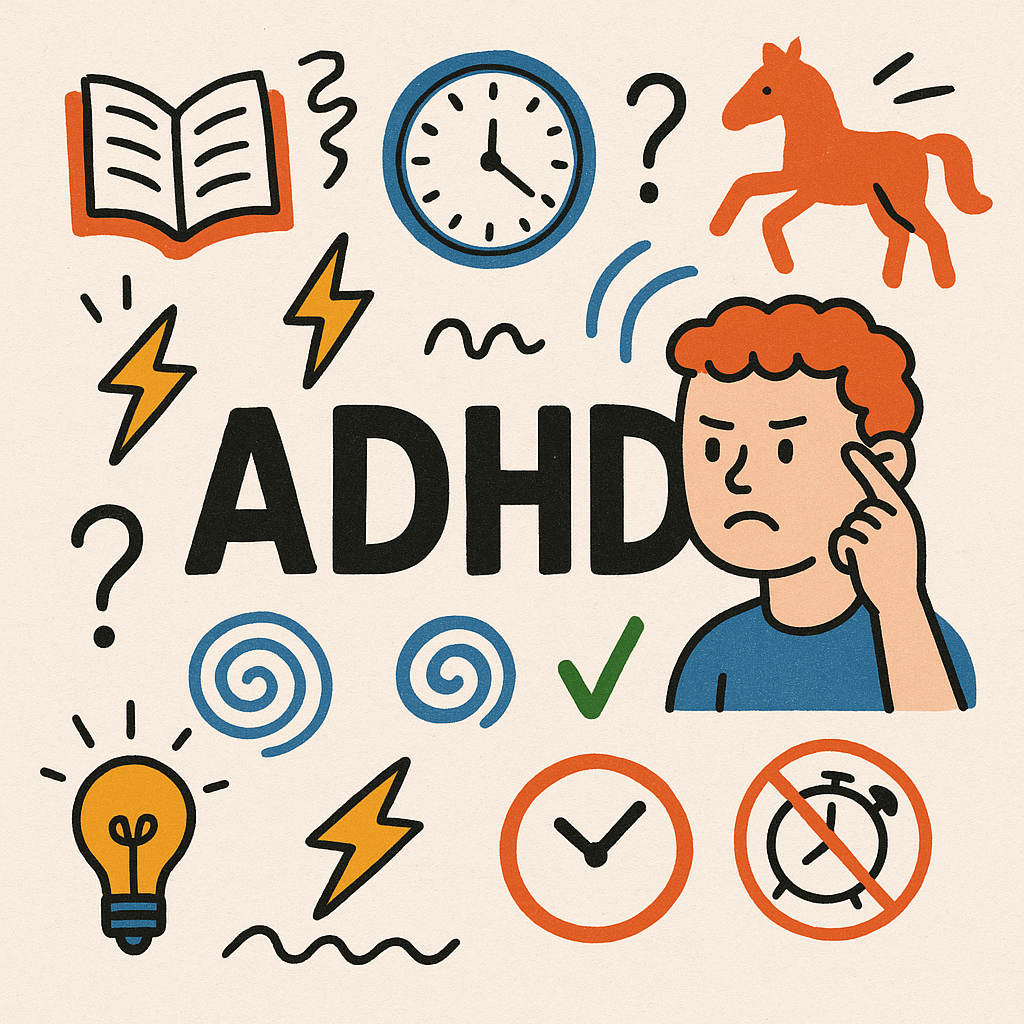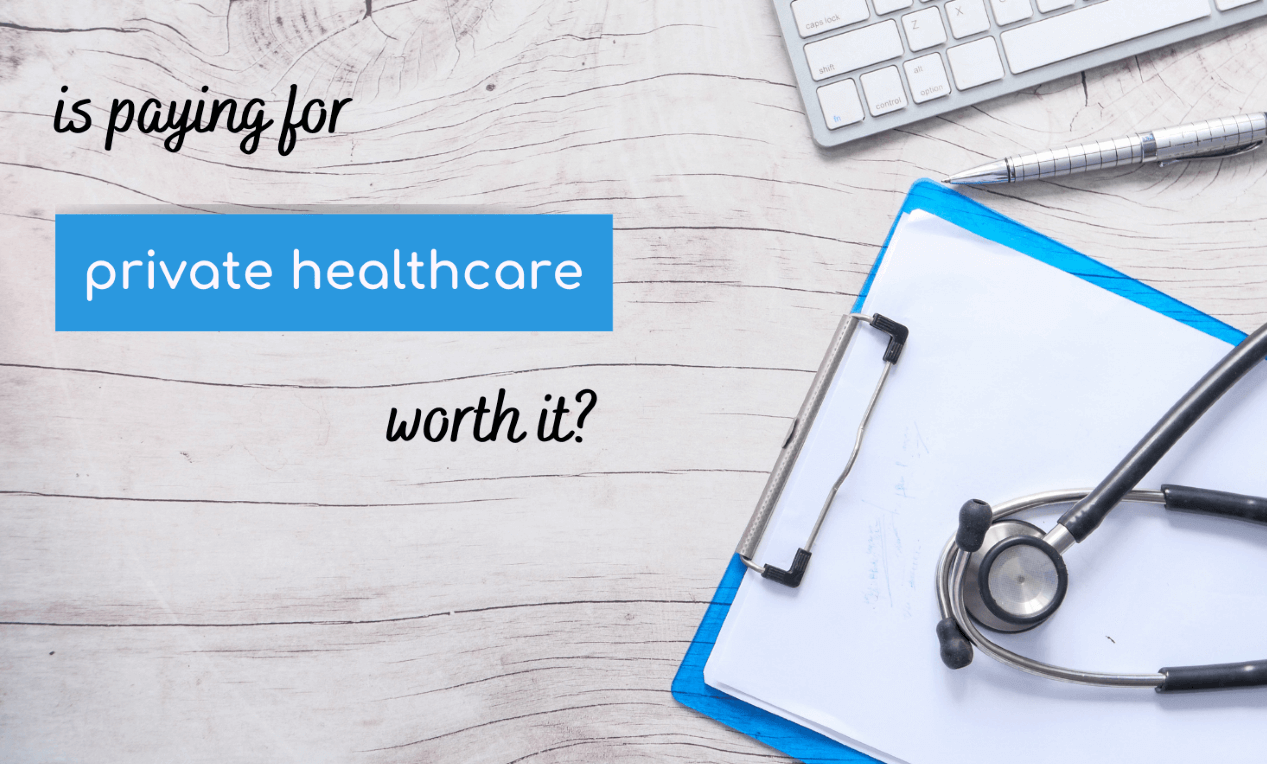News
News, updates, articles and discussions from healthcare professionals.
News, updates, articles and discussions from healthcare professionals.

Living with ADHD as an adult can be a challenging and sometimes isolating experience. Navigating daily routines, managing time, and staying organised may feel overwhelming, even when you’re putting in your best effort. The good news is you’re not alone, and there are practical solutions that can make a real difference. One approach gaining attention and delivering genuine results is ADHD coaching. Whether you're exploring options beyond the NHS or simply curious about what coaching could offer, this guide will help you understand your choices and feel more empowered about your next steps.Understanding ADHD Coaching ADHD coaching is a personalised, practical form of support that helps you develop effective strategies for managing symptoms. Unlike therapy—which often delves into emotional and psychological patterns—ADHD coaching focuses on building skills and boosting confidence in your day-to-day life. Your coach acts as a collaborative partner, helping you: Set achievable goals tailored to your needs Break down overwhelming tasks Develop routines and structures that work for you Build self-awareness and self-advocacy skills Stay accountable and celebrate your progress The process is forward-looking and practical, designed to help you thrive, reduce stress, and make day-to-day life more manageable.Does Coaching Help ADHD? Absolutely, coaching can be a transformative resource for many people with ADHD. Research and personal stories alike show that working with an ADHD coach can help improve organisation, time management, decision making, and emotional regulation. What sets coaching apart is its empowering nature. Rather than focusing solely on challenges, a coach works with you to harness your strengths and find what genuinely works for you. Many people find they gain a new sense of control and confidence, often feeling understood and supported for the first time. Remember: ADHD isn’t a character flaw—it just means your brain processes information differently. With the right support, your unique qualities can become assets, not obstacles.ADHD Coaching Through the NHS: What’s Available? Many people in the UK wonder if ADHD coaching is offered as part of NHS mental health services. Currently, the NHS primarily focuses on clinical interventions such as medication and therapy, including cognitive behavioural therapy (CBT). Unfortunately, coaching itself isn’t routinely provided through the NHS, and there are no widespread, standardised coaching services available on NHS referral. Some NHS trusts may pilot limited support groups or skill-building sessions run by clinicians, but access varies wildly depending on your location, funding, and the age group served. If you’re looking for consistent, specialist coaching, it’s likely you’ll need to look beyond the NHS.Private ADHD Coaching: What to Expect Turning to the private sector opens up a much wider range of ADHD coaching options, and you don’t need a medical referral to get started. Here’s what you can typically expect: Personalised Attention: Sessions are tailored to your goals, whether that’s improving work performance, managing family life, or building self-esteem. Flexible Formats: Coaching can take place in person, online, or even over the phone, making it easy to fit into your schedule. Qualified Professionals: Many ADHD coaches have specialist training or lived experience, and some hold additional credentials in education or mental health. Before choosing a coach, always check their credentials, experience, and approach. You deserve someone who truly understands ADHD and respects your unique journey.What Does an ADHD Coach Cost in the UK? Cost is an important factor when seeking private ADHD support. In the UK, prices for an ADHD coach can vary based on experience, location, and session length. Typically, you can expect: Individual Sessions: £60 to £120 per hour is common Packages: Some coaches offer bundles (e.g., six sessions for a discounted price) Ongoing Support: Some offer options for quick check-ins or email support between sessions While this is an investment, many people find the benefits extend far beyond the time spent in coaching sessions. Remember, some workplaces or universities may offer funding or subsidies, so it’s always worth asking.How to Find a Qualified ADHD Coach Without the Stress Looking for the right ADHD coach may seem daunting, but support is at your fingertips. Platforms like My Health Assistant are designed to make this process smoother and less overwhelming. You can search, compare, and book appointments with a qualified ADHD coach in your local area or online—all in one place. With My Health Assistant, you can: Discover professionals who specialise in ADHD Read profiles and reviews to find the right fit Book and manage sessions easily from your phone or computer Taking the first step is often the hardest, but with the right help, you can move closer to achieving your goals.Positive Affirmations for Your Journey If you’re feeling uncertain, remember: You’re not alone—many people are navigating the same path Seeking support is a strength, not a weakness Small changes and support can lead to big improvements in your everyday life You have what it takes to thrive with ADHD. With tools like coaching and platforms such as My Health Assistant, you’re one step closer to creating positive change.Summary: Taking Action and Finding Support Coaching can play a pivotal role in supporting adults with ADHD, helping you feel empowered and more in control. While the NHS currently doesn’t offer routine ADHD coaching, there are many excellent private options available—with flexible formats and supportive, skilled coaches. By investing in professional support, you’re investing in yourself. And with resources like My Health Assistant, finding a coach who understands ADHD isn't just possible—it’s simple. If you’re ready to explore coaching and find the right ADHD support, why not take the first step today? Your journey matters, and support is here when you’re ready
Read more
Understanding ADHD Assessments: What To Expect During Diagnosis Are you thinking about getting an ADHD assessment for yourself or someone you care about? If so, you might feel a mix of relief, worry, and maybe even confusion about where to start. That’s completely normal. Knowing what to expect during the ADHD diagnostic process can make things a lot less daunting—and set you up for a more empowered experienceWhy ADHD Assessments MatterBefore diving into the nuts and bolts of the process, it’s worth highlighting why a proper diagnosis is so important. ADHD, which stands for Attention Deficit Hyperactivity Disorder, is a recognised neurodevelopmental condition that affects focus, self-control, and other important everyday skills. Many people go years without a diagnosis, sometimes blaming themselves for difficulties at work, school, or in relationships. Proper assessment isn’t about “labelling” you—it's about understanding your unique needs and getting the right support in place. An ADHD diagnosis opens the door to evidence-based treatments, self-understanding, and tailored strategies for daily life The ADHD Assessment Process: Step by StepADHD assessments are carried out by qualified healthcare professionals, such as psychiatrists, psychologists, or specialist GPs. The process is more than just answering a few questions—it’s a thorough look at your strengths, challenges, and how these have affected your life over time. Here’s what you’re likely to experience: 1. Clinical Interview The cornerstone of any ADHD assessment is the clinical interview. This is an in-depth conversation between you and the clinician. They'll ask about your childhood, current symptoms, and how you’ve managed with things like organisation, attention, and impulsivity through the years. For children and teens, parents or teachers might also provide information. Don’t worry—this isn’t a test you can “fail.” Be as honest as possible, even if you feel some questions are a bit personal. The more open you are, the more accurate the assessment will be2. ADHD Rating Scales and QuestionnairesMost clinicians use standardised ADHD rating scales to measure symptoms. These questionnaires capture how often you experience specific issues, like forgetfulness or restlessness. Sometimes, you’ll complete these forms yourself, while in other cases, a family member or teacher might fill them in. Some commonly used tools include: Conners’ Rating Scales Adult ADHD Self-Report Scale (ASRS) Vanderbilt Assessment Scales (often in paediatric assessments) These questionnaires help to compare your experiences to what’s typical for someone your age.3. Gathering Additional InformationTo see the full picture, the clinician may ask for school reports, workplace feedback, or details about medical history and family background. This supports a well-rounded, fair assessment. Occasionally, you’ll be asked about other areas like sleep, mood, or learning. That’s because conditions like anxiety, depression, or dyslexia sometimes occur alongside ADHD.4. Cognitive and Behavioural AssessmentIn some cases, more structured tasks or cognitive tests are used to assess things like memory, attention, and problem-solving. But not every assessment will include these steps—they’re often reserved for complex cases.5. Diagnostic DiscussionAfter pulling together all these details, your clinician will review the evidence in light of diagnostic criteria (the guidelines doctors use to diagnose conditions). They'll talk you through the findings and, if ADHD is diagnosed, explain the recommended next steps. You have the right to ask about anything you don’t understand—so don’t hesitate to seek clarityThe Nine Symptoms of ADHD One question that comes up a lot is: what symptoms do doctors actually look for? While the specifics differ slightly for children and adults, these nine core symptoms of inattentive ADHD are commonly consideredOften fails to give close attention to details or makes careless mistakes. Frequently has trouble sustaining attention. Seems not to listen when spoken to directly.Doesn’t follow through on instructions; struggles to finish tasks. Has trouble organising tasks and activities. Avoids or dislikes tasks that require sustained mental effort. Often loses things needed for tasks. Is easily distracted by external stimuli. Is often forgetful in daily activities.For the “hyperactive-impulsive” type, another nine symptoms are considered (such as fidgeting, excessive talking, answering before a question is finished, difficulty waiting your turn, etc.), but these nine provide a snapshot of the “inattentive” side. To get a diagnosis, a pattern of several symptoms must have been present for a long time—not just on stressful days. Your clinician will help differentiate between normal distractibility and ADHDCommon Misconceptions About ADHD AssessmentIt’s normal to be a bit worried or sceptical about the assessment process. Here are a few common myths—debunked:“It’s just ticking boxes.” Actually, a diagnosis considers your lived experience, not just symptoms. “You have to fail in school or work.” ADHD looks different for everyone; many high-achievers still have ADHD. “Tests are invasive or embarrassing.” Most assessments are just conversations and questionnaires in a safe, respectful environmentHow My Health Assistant Supports Your JourneyAccessing an ADHD assessment shouldn’t add extra stress. With My Health Assistant, you can connect with fully qualified ADHD specialists and arrange a booking and ongoing support. There’s no waiting for weeks on end, and your appointments are easy to track and manage via the app. private adhd assessment near you—all with straightforward online If you’d like practical tips, resources, or even ADHD coaching after your diagnosis, you’ll find a wealth of options on the platform. We’re here to help every step of the way, so you can take control of your health, understand your mind, and thrive. Moving Forward ADHD assessments are thorough, professional, and designed to help—not judge. By understanding what’s involved, you’re in a stronger position to advocate for yourself or your loved one. Remember: you’re not alone, and support is always available. Ready to take the next step? Explore tailored ADHD services and discover how My Health Assistant can help you confidently manage your health—starting today
Read more
What Is COPD?Chronic Obstructive Pulmonary Disease (COPD) is a progressive lung disease that makes breathing increasingly difficult over time. If you’re wondering, what are the 4 stages of COPD?, understanding these stages is essential for managing symptoms effectively and maintaining a good quality of life. COPD staging is used by healthcare professionals to assess disease severity, determine treatment options, and guide lifestyle recommendations. What Is COPD Staging?COPD staging is a system that classifies the progression of COPD into four stages, from mild to very severe. This classification helps healthcare providers evaluate lung function and tailor treatments according to the patient’s needs. The stages are based on a test called spirometry, which measures how much air you can inhale and exhale, as well as how fast you can blow air out of your lungs. What Are The 4 Stages of COPD?Each stage of COPD is defined by specific measurements from a spirometry test, which assesses lung function and helps classify the disease's severity. The primary focus in this test is the FEV1 (Forced Expiratory Volume in 1 second), a measure of how much air a person can forcefully exhale in one second after taking a deep breath. FEV1 is compared to a predicted value, which represents the normal FEV1 measurement for a healthy individual of the same age, sex, height, and ethnicity. The percentage of FEV1 compared to the predicted value is then used to stage COPD and guide appropriate treatment options.Stage 1: Mild COPD: FEV1 ≥ 80% of predicted valueIn the early stage, COPD may present with mild symptoms, often mistaken for a common cold or smoker’s cough. Breathlessness may occur occasionally, particularly after physical exertion. Many people in this stage are unaware they have COPD, and lifestyle changes such as quitting smoking can significantly slow disease progression.Stage 2: Moderate COPD: FEV1 between 50% and 79% of predicted valueAs COPD progresses, symptoms become more noticeable. In moderate COPD, patients may experience increased shortness of breath, frequent coughing, and fatigue. This stage often prompts people to seek medical help as everyday tasks may start to feel challenging. Pulmonary rehabilitation and medications to open the airways may be recommended.Stage 3: Severe COPD: FEV1 between 30% and 49% of predicted valueSevere COPD significantly impacts daily life, with breathlessness becoming more frequent and intense. In this stage, exacerbations—sudden worsening of symptoms—are common. Patients may require oxygen therapy to help maintain normal blood oxygen levels, alongside medications and regular medical care.Stage 4: Very Severe COPD: FEV1 < 30% of predicted valueAlso known as end-stage COPD, this stage is marked by severe, persistent symptoms that make it difficult to carry out even basic activities. Respiratory failure may occur, requiring advanced treatments and often palliative care. At this stage, managing symptoms and ensuring comfort becomes the primary focus. Managing COPD at Every StageAlthough COPD is not curable, early diagnosis and appropriate management can significantly improve quality of life. Treatments range from lifestyle changes and medication to oxygen therapy and pulmonary rehabilitation. If you or someone you know is experiencing symptoms, it’s crucial to seek guidance from a qualified healthcare provider to determine the best treatment plan.For help finding a qualified COPD specialist, use My Health Assistant to connect with trusted healthcare providers near you.
Read more
Musculoskeletal (MSK) physiotherapy is a specialised form of physical therapy aimed at treating conditions affecting the muscles, bones, joints, and soft tissues. If you’ve ever wondered, what is MSK physio?, it’s a comprehensive approach to managing pain, restoring mobility, and improving quality of life for individuals experiencing musculoskeletal disorders. Understanding MSK PhysiotherapyMSK physiotherapy targets problems caused by injuries, chronic conditions, or wear and tear on the body. These issues can range from back pain, arthritis, and joint sprains to sports injuries and post-surgical rehabilitation. A trained physiotherapist will assess your symptoms, identify the underlying causes, and create a personalised treatment plan that may include manual therapy, exercise programmes, education on posture, and advice for preventing future problems. What Can MSK Physiotherapy Help With?Common conditions treated by musculoskeletal physiotherapy include:Back and neck pain: Often resulting from poor posture, muscle strain, or disc issues.Joint problems: Such as arthritis, which can cause stiffness, swelling, and pain.Sports injuries: Including ligament sprains, muscle tears, and tendonitis.Post-operative rehabilitation: Helping patients recover mobility and strength after surgery.Work-related injuries: Addressing repetitive strain injuries and ergonomic issues. Who Should See an MSK Physiotherapist?People from all walks of life can benefit from MSK physiotherapy, whether they are athletes, office workers, or older adults dealing with age-related conditions. It’s not just for those with a diagnosed injury; if you experience persistent aches, limited mobility, or discomfort in daily activities, consulting an MSK physiotherapist could be the right step towards a more active and pain-free life. What to Expect from an MSK Physiotherapy SessionDuring an MSK physiotherapy session, the therapist will evaluate your range of motion, strength, and functional ability. Depending on the diagnosis, they may use techniques such as massage, joint mobilization, or even acupuncture to alleviate symptoms. Education is also a key aspect, helping patients understand their condition and the best ways to manage it. Why Choose MSK Physiotherapy?MSK physiotherapy not only focuses on relieving current symptoms but also on preventing future problems. By improving strength, flexibility, and posture, it helps reduce the risk of recurring issues. If you’re experiencing discomfort, it’s essential to seek help early to avoid worsening symptoms.My Health Assistant connects you with qualified MSK physiotherapists who can support you on your path to recovery. Don't wait - search local trusted professionals today.
Read more
What Are the Most Important Health Screenings for Men?Maintaining your health can feel overwhelming, especially when you're unsure which tests or screenings you need and when. To help you stay informed, we've created this guide on essential men's health screenings. By understanding what to prioritise, you can take control of your health and plan for a long, healthy future. Key Health Screenings by AgeIn Your 20s and 30sTesticular Cancer Screening: Although rare, testicular cancer is the most common cancer in young men. Regular self-examinations can help detect unusual lumps or swelling early on.Sexually Transmitted Infection (STI) Screening: If you're sexually active, regular STI screening is vital to maintaining your overall health and protecting your partners.Blood Pressure Check: Starting early is essential. Get your blood pressure checked at least every five years or more often if you have risk factors like a family history of heart disease or smoking. In Your 40sCholesterol Test: From your 40s onwards, it’s vital to monitor cholesterol levels regularly, particularly if you have a family history of heart disease or other risk factors.Diabetes Screening: Men over 40, especially those who are overweight or have a family history, should consider screening for type 2 diabetes. Early detection can help prevent complications later on.Prostate Cancer Screening: Discuss the pros and cons of screening with your doctor. Although the PSA test is widely used, it may not be necessary for every man in his 40s, depending on family history.In Your 50s and BeyondColorectal Cancer Screening: Starting at age 50, regular screenings for bowel cancer (via colonoscopy or home screening kits) become essential.Heart Health Check: Cardiovascular risk increases with age. A heart health check typically includes a blood pressure test, cholesterol test, and an evaluation of lifestyle risk factors.Prostate Health Check: Prostate issues, including cancer, become more common as you age. Talk to your doctor about regular prostate checks, especially if there’s a family history of prostate cancer. Diagnostic Tests and Wellbeing ChecksIn addition to routine health screenings, other diagnostic tests are essential for gaining deeper insights into your overall well-being. For instance, liver function tests are particularly valuable for individuals who consume alcohol regularly or take medications that may impact liver health. Men experiencing reduced libido or fatigue may benefit from hormonal testing, particularly testosterone levels, to determine if hormone imbalances are contributing to their symptoms, and male fertility testing may be useful for those planning on starting a family. Managing Medical ConditionsMen with a family history of certain conditions, or who are at higher risk, should consider more frequent testing:Heart Disease: If you have high blood pressure, high cholesterol, or a family history of heart disease, you may need more regular heart screenings.Cancer: If you have a family history of cancers like bowel, prostate, or testicular cancer, talk to your healthcare provider about early and frequent screenings.It’s crucial to consult your doctor for tailored advice on managing existing conditions and determining the best screening schedule for your needs. ConclusionTaking care of your health as a man doesn’t have to be overwhelming. By staying informed and scheduling regular men's health screenings, you can catch potential issues early and take proactive steps to maintain your well-being. From routine check-ups to more specific diagnostic tests, these screenings are essential tools for preventing illness and promoting long-term health. Whether you're focused on heart health, cancer prevention, or overall wellness, investing in your health now will pay off in the future. Book today and take control of your health!
Read more
When it comes to maintaining your health, it can be difficult to know exactly what screenings and tests you need, and when. With so much information out there, we know it can be confusing to navigate your health care needs. That’s why we've put together this handy guide on the most important health screenings for women at various stages of life. By understanding what to prioritise, you can take proactive steps toward a healthier future. Key Health Screenings by AgeIn Your 20s and 30sCervical Screening (Smear Test): Starting at age 25, women should have a cervical screening every three years to detect changes in cervical cells that could lead to cervical cancer. You still need to be screened even if you've had the HPV vaccine - whilst your risk of cancer is reduced if you've had the vaccine, it doesn't protect against all types of HPV.Sexually Transmitted Infection (STI) Screening: Regular STI screening is recommended for sexually active women to prevent and treat infections early.Breast Awareness: While routine mammograms aren’t usually necessary in your 20s and 30s, being aware of any changes in your breasts is important. You should also consider your risk factors, such as being overweight, smoking & drinking too much alcohol.In Your 40sBlood Pressure Check: High blood pressure can develop without symptoms, so it’s important to have your blood pressure checked at least every five years, or more frequently if you’re at risk.Cholesterol Test: Starting in your 40s, regular cholesterol tests are recommended, particularly if you have a family history of heart disease.Breast Screening (Mammogram): Women in the UK are invited for mammograms every three years from age 50, but if you're in your 40s and have risk factors like family history, you might consider earlier screening options.In Your 50s and BeyondBone Density Scan (DEXA): Osteoporosis becomes a concern as women age. A bone density scan can assess your risk of fractures and bone loss.Bowel Cancer Screening: Everyone aged 60 to 74 years who is registered with a GP and lives in England is automatically sent an NHS bowel cancer screening kit every 2 years. The programme is expanding so that everyone aged 50 to 59 years will be eligible for screening. It's a simple home test that checks for signs of bowel cancer. You may wish to opt for private screening if you are considered at risk, or want to be screened more regularly.Diabetes Screening: With age, the risk of type 2 diabetes increases. Regular screening can help catch it early, especially if you're overweight or have a family history. Diagnostic Tests and Wellbeing ChecksWhile routine screenings are key, there are other important diagnostic tests and checks to consider as you navigate different life stages. For women planning to start a family, fertility testing can provide insight into your reproductive health. Preconception health checks, including blood tests and genetic screening, help ensure you're in the best possible shape for a healthy pregnancy.Menopause brings its own set of challenges, and hormone testing can be valuable in managing symptoms. Monitoring levels of oestrogen and follicle-stimulating hormone (FSH) can give you a clearer picture of where you stand and help inform your decisions on lifestyle choices such as diet and exercise regimes.Don’t forget about your thyroid health, especially if you’re experiencing unexplained symptoms like fatigue or weight changes. Routine thyroid function tests can help detect any issues early on.Managing Medical ConditionsFor some women, a family history of certain conditions might necessitate more frequent or in-depth testing, earlier than the standard recommended screening age. Regular assessments and evaluation of risk factors can be vital to ensure that you're safeguarding your future health.Cancer: If you have a family history of cancers such as breast, ovarian, or bowel cancer, you may need earlier or more frequent screenings.Heart Disease: If you have risk factors such as high cholesterol, high blood pressure, or a family history of heart disease, consider more frequent cardiovascular screenings.Thyroid Screening: Women, especially those with a family history of thyroid issues or autoimmune diseases, should consider thyroid function tests. ConclusionTaking charge of your health doesn’t have to be overwhelming. By staying informed about the screenings and tests that are most relevant to your age and life stage, you can make proactive decisions that support your well-being. Whether it's routine screenings, diagnostic tests, or managing existing conditions, being aware and vigilant is key. Start with the basics, consult with your healthcare provider, and remember that these screenings are tools to help you live a healthier, fuller life. After all, your health is worth investing in.
Read more
What are the Benefits of Vitamin B12 Injections?Vitamin B12, also known as cobalamin, is an essential nutrient that plays a crucial role in various bodily functions. While it can be obtained through diet and supplements, vitamin B12 injections have gained popularity for their effectiveness and rapid results. This blog post delves into the myriad benefits of vitamin B12 injections, offering insights into why they might be the right choice for you.What is Vitamin B12?Before exploring the benefits of vitamin B12 injections, it's important to understand what vitamin B12 is and why it's essential. Vitamin B12 is a water-soluble vitamin that supports nerve function, red blood cell formation, DNA synthesis, and energy production. It is naturally found in animal products such as meat, fish, eggs, and dairy.Why Consider Vitamin B12 Injections?While dietary sources and oral supplements are common ways to obtain vitamin B12, injections offer several unique advantages. Here are some compelling reasons to consider this method:Enhanced AbsorptionOne of the primary benefits of vitamin B12 injections is enhanced absorption. Some individuals have difficulty absorbing vitamin B12 through their digestive system due to medical conditions like pernicious anaemia or gastrointestinal issues. In such cases, injections bypass the digestive tract entirely, delivering the nutrient directly into the bloodstream for immediate use.Rapid ResultsVitamin B12 injections provide rapid results compared to oral supplements. When injected intramuscularly or subcutaneously, the body can utilise the nutrient almost immediately. This quick absorption can be particularly beneficial for individuals experiencing severe deficiencies or those needing a fast energy boost.Increased Energy LevelsA well-known benefit of vitamin B12 injections is increased energy levels. Vitamin B12 plays a pivotal role in converting food into energy by aiding in carbohydrate metabolism. Individuals with low levels often experience fatigue and weakness; thus, replenishing this vital nutrient through injections can lead to noticeable improvements in energy and overall vitality.Improved Mood and Cognitive FunctionVitamin B12 is integral to maintaining healthy brain function and emotional well-being. Low levels have been linked to mood disorders such as depression and cognitive impairments like memory loss. By ensuring adequate levels through regular injections, individuals may experience improved mood stability and enhanced cognitive performance.Support for Red Blood Cell ProductionVitamin B12 is crucial for red blood cell production. A deficiency can lead to anaemia characterised by symptoms like fatigue, shortness of breath, and dizziness. Regular vitamin B12 injections help maintain healthy red blood cell counts, ensuring efficient oxygen transport throughout the body.Who Can Benefit from Vitamin B12 Injections?While anyone can potentially benefit from optimising their vitamin B12 levels, certain groups are more likely to require supplementation through injections:Vegetarians and VegansSince vitamin B12 is predominantly found in animal products, vegetarians and vegans are at a higher risk of deficiency. Regular injections can help these individuals maintain adequate levels without compromising their dietary choices.Older AdultsAs people age, their ability to absorb nutrients decreases due to changes in stomach acid production and gastrointestinal function. Older adults often benefit from vitamin B12 injections as they provide an efficient way to ensure sufficient intake despite these challenges.Individuals with Medical ConditionsCertain medical conditions like Crohn's disease or celiac disease affect nutrient absorption in the gut. People with these conditions may find it difficult to maintain adequate vitamin levels through diet alone; hence, they may greatly benefit from regular vitamin b12 injections.How Often Should You Get Vitamin B12 Injections?The frequency of vitamin b-2 shots varies depending on individual needs and medical advice but generally ranges from weekly to monthly intervals initially followed by maintenance doses every few months once optimal levels are achieved.Conclusion: The Benefits Outweigh Any DrawbacksIn conclusion there numerous undeniable benefits associated with opting for regular doses via injection form when compared against traditional methods such as oral tablets or dietary intake alone especially if you fall under one aforementioned categories where absorption might pose significant challenge otherwise leading potential health complications down line. Whether you're looking boost your energy improve mental clarity support red blood cell production considering adding routine part healthcare regimen could prove highly advantageous long term perspective. Always consult healthcare provider determine best course action tailored specific needs ensure safe effective supplementation strategy place maximise overall wellbeing moving forward!
Read more
Can A Chiropractor Help With Sciatica?Sciatica affects up to 40% of people in their lifetime. It’s a condition that can be debilitating in some cases, with common symptoms including pain, numbness, and weakness. And, while in most instances it gets better in 4-6 weeks, some people struggle with ongoing or reoccurring sciatica over a much longer timeframe.If you’re struggling with sciatica and looking for a treatment option to ease the symptoms, there are a range of options open to you. Seeing a GP might lead to a referral for pain medication, physical therapy, or even surgery in extreme cases. You can also consider other treatments that fall outside of the traditional medical remit. Chiropractic care is one such option.We’re here to explore the relationship between sciatica and chiropractors, providing you with information that might help you to decide whether to seek chiropractic treatment. What is sciatica?Sciatica is the name given to the symptoms caused when your sciatic nerve is compressed, pinched, or otherwise irritated. The sciatic nerve runs from your lower back to your feet, so sciatica tends to affect the lower body exclusively. It’s also often only experienced on one side of the body, since the sciatic nerve splits in two to run down each leg. The symptoms of sciatica vary from person to person, but typically come in the form of pain, a tingling sensation, numbness, or weakness affecting the bottom, back, legs, or feet. These symptoms will generally be worsened when moving, sneezing, or coughing.Some of the most common causes of sciatica include a herniated disk, a bone spur, or a narrowing of the spine. Essentially any injury or condition that causes a change in the body resulting in pressure being put on the sciatic nerve can cause it. It will typically resolve itself within 4-6 weeks, but when it doesn’t it can be difficult to tolerate. While severe sciatica makes up the minority of cases, left untreated it can lead to long-term sciatic nerve damage and other side effects. Considering chiropractic care for sciaticaChiropractors work with people suffering from pain or stiffness in the bones or joints. They use techniques called adjustments to re-align the body and relieve pain. They can be thought of as experts in the neuromusculoskeletal system, which basically means they know a lot about how bones, muscles, and nerves.Since sciatica revolves around problems with a nerve, and often results from issues relating to bones, it stands to reason that chiropractors are a common choice for alternative treatment for people with sciatica. Chiropractic care for sciatica can come in a range of forms, including:Adjustments – A chiropractor may be able to ease a herniated disc back into position to take pressure off the sciatic nerve using a spinal adjustment.Spinal decompression – Chiropractors often use a technique called spinal decompression to relieve the compression of nerves along the back, including the sciatic nerve.Chiropractic exercises – Aside from providing direct treatment in the form of adjustments, chiropractors can also recommend exercises that can help release sciatic nerve pressure.Chiropractic care isn’t a traditional medical route, and wouldn’t typically be seen by medical professionals as a first-line treatment for sciatica. However, there are some studies that seem to indicate that it can be effective in limited ways, including by relieving pain.In one study from 2014 assessing treatment options for people with leg and back pain, participants who received spinal manipulation from a chiropractor had less pain after 12 weeks than the control group. They also used less medication up to a year later.Another study, combining the analyses of 11 different research articles, also found that chiropractic care can be an effective form of pain relief for all types of back pain, including sciatica. And, since chiropractic treatment is generally considered to be extremely safe, according to a review from the National Center for Complementary and Integrative Health, there aren’t any likely side effects to seeking it. Other methods for relieving sciaticaThere are a range of other non-medical methods of gaining relief from the symptoms of sciatica. These aren’t well-researched, and so don’t constitute medical treatment, but have amassed popularity regardless:Build back strength – Low-impact exercises that strengthen the back or core, such as crunches, can improve the support your spine gets and reduce sciatica symptoms.Stretch the hips and hamstrings – Tight muscles in the areas that sciatica affects can worsen the symptoms, so stretching muscles in your hips and hamstrings can provide temporary relief.Use heat and cold treatment – Ice packs or heating pads can be another way of gaining temporary pain relief when sciatica symptoms flare up. Finding a chiropractor to help with sciaticaWhile it’s always recommended that you seek medical attention before making a decision about treatment for sciatica, if you’ve decided to pursue chiropractic as a way of getting pain relief, you’ll need to find a chiropractor.You can search options near you with My Health Assistant, find a professional who suits you, and book directly through our platform.
Read more
Private healthcare in the UK often carries misconceptions that it's exclusively for the wealthy or requires expensive insurance. However, the landscape of private healthcare has evolved, offering more accessible options than ever before. Modern advancements and innovative platforms are reshaping the accessibility and affordability of private healthcare services, making them a more viable option for a wider audience. Here we dispel some of the widespread myths surrounding private healthcare. Is private healthcare worth the cost?One common misconception is that private healthcare comes with exorbitant costs. While it's true that some specialised treatments can be expensive, many private healthcare providers offer a wide range of services at competitive prices, making them accessible to a broader spectrum of individuals. Additionally, with the introduction of online platforms like My Health Assistant, individuals can easily find health and wellbeing professionals tailored to their budgets. This shift has transformed private healthcare into a feasible option for a more extensive audience. Can I still use the NHS if I see a private doctor?Absolutely. You can mix NHS and private care, and this will not effect your place in the NHS ‘queue’ - for example, if you pay a private consultant for an expert or second opinion, you can be referred back to the NHS for treatment without having to see an NHS consultant first. The NHS won't pay for or subsidise any private care, but you will remain entitled to your NHS care and it will always be free, except for things like prescriptions. In response to the increased demand for mixing private & NHS care, the Department of Health and Social Care issued guidance which states that you should receive your private care at a different time and place from your NHS care whenever possible to maintain a clear separation between the two. Can I get private healthcare without insurance?Yes. You don't need pricey medical insurance to access private healthcare services. Self-funded individuals can directly approach private healthcare providers, bypassing the insurance middleman. This approach can provide greater flexibility in choosing treatments, professionals, and appointments. That said, private health insurance can be a way of spreading these expenses over time, but be sure to know the facts on what your policy does and does not cover, particularly with relation to pre-existing or chronic conditions such as diabetes and some cancers. Many employers now offer private medical insurance as part of their employee benefits package, it’s worth checking with your employer to see if you are covered. Do I need a GP referral for private treatment?Another misunderstanding is that a GP referral is obligatory for private healthcare. In reality, many private healthcare providers accept self-referrals, allowing patients to take control of their healthcare journey. This approach provides financial flexibility and empowers individuals to tailor their care to their needs and preferences. However, if you have private medical insurance and intend to claim for the cost of your treatment, be sure ask your insurer if they need a referral before going ahead. What are the benefits of private healthcare in the UK?The main benefit is that most aspects of private healthcare, from diagnosis to aftercare can be obtained much faster than on the NHS. Private healthcare empowers patients with the ability to choose their healthcare provider and treatment options, which fosters a patient-centric approach to healthcare. You may also be able to access certain new treatments and medications that are not yet available on the NHS. Beyond the commonly sought medical treatments, private healthcare in the UK also offers a diverse range of services that may not be widely available on the NHS, such as personalised nutrition consultations, hypnotherapy and acupuncture. Conclusion The landscape of private healthcare in the UK has evolved to be more inclusive and accessible than ever before. With reasonable pricing, options for self-pay patients, and the flexibility to tailor treatments to individual needs, private healthcare has transcended its stereotypes. By understanding the modern reality of private healthcare, individuals can make informed decisions about their healthcare journey.
Read moreMy Health Assistant can be used as an additional marketing tool for business generation right through to a full virtual office ensuring your time is focused on patients and not admin.
Find out more